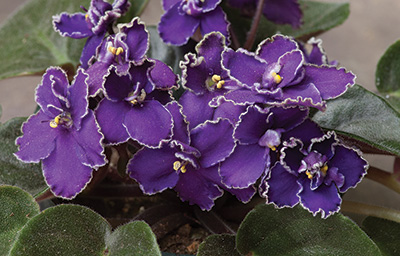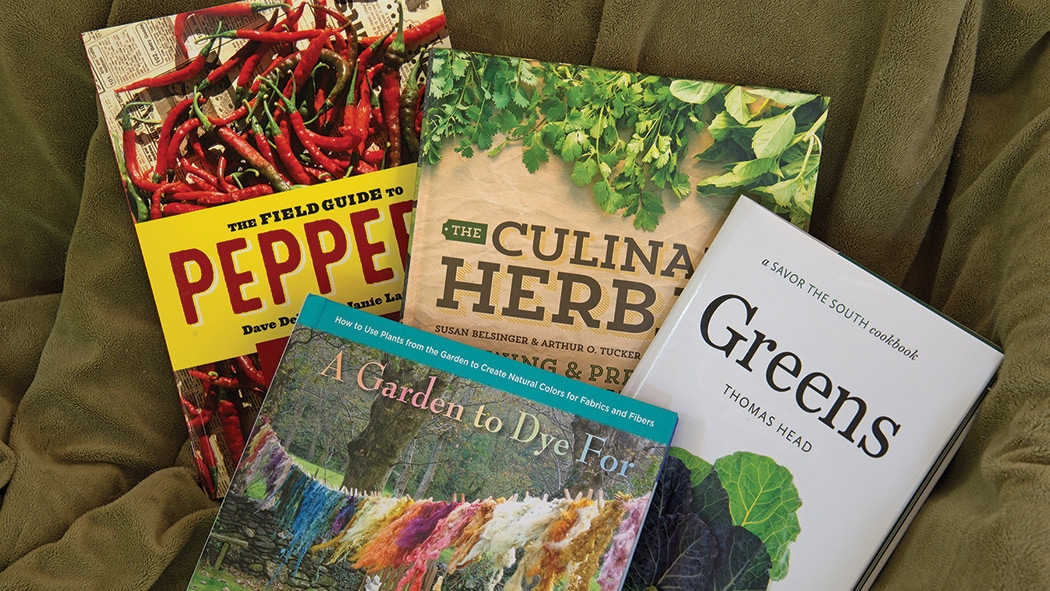Need ideas for those friendly gardeners on your Christmas gift list? Why not go with garden books that will provide your favorite backyard growers with plenty of ideas and inspirations to consider before the spring planting season?
Need suggestions? Below are some of the more interesting reads that have landed on my desk in the last few months:
A Garden to Dye For by Chris McLaughlin (St. Lynn’s Press, 142 pages, $17.95 hardback). Whether you are looking for a new, nifty garden theme or natural, homegrown infusible hues from plants for craft projects, this book is sure to please. More than 50 plants are highlighted, and each comes with cultivation tips as well as instructions for making dyes. Fibers and fabrics are the typical mediums for dyes, but McLaughlin broadens the appeal — and fun — by also detailing how to make garden-grown watercolors and Easter egg dyes.
The Field Guide to Peppers by Dave DeWitt and Janie Lamson (Timber Press, 308 pages, $24.95 paperback). When it comes to hot, sweet or ornamental peppers, it can be a wide open, confusing world of choices for gardeners. This guide takes much of the mystery away with profiles of 400 different peppers that, for each, includes origin, pod description (with picture), days to harvest, heat level, plant height and post-picking possibilities. Because there are so many, most of the peppers mentioned won’t be found at local garden centers, but rather than describe and then deny, the authors have added four pages of mail order pepper nurseries.
Greens by Thomas Head (UNC Press, 128 pages, $19 hardback). Mustard, turnip, collard — these are the greens of the South, and this book celebrates their culinary possibilities by offering tasty recipes that range from first course temptations such as collard empanadas, mustard greens soup, and warm turnip greens dip to side dishes that include sweet corn and turnip greens, Kashmiri greens, and oysters Rockefeller with collards. Looking for a unique main course? Head serves up collard green dolmas, shrimp and greens with fried grits, red posole with collard greens, and many more similarly Southern-tinged entrees.
The Culinary Herbal by Susan Belsinger and Arthur O. Tucker (Timber Press, 328 pages, $27.50 hardback). New to growing herbs? Take a shortcut to becoming a pro with this informative guide that goes deep into details on how to grow, harvest, preserve and enjoy 97 different herbs, which range from the usual parsley, dill, rosemary and thyme to the interestingly obscure — mitsuba, orach, ajowan and papaloquelite. Mail order sources as well as basic recipes to make herbal butters, pastes, syrups and vinegars are also included.
Timely Tip

African violets need to be watered, of course, but the chlorine typically found in city water can cause leaf spots and fewer flowers.
An easy remedy is to simply leave a bottle of tap water out overnight to allow the chlorine to dissipate.
As alternatives, you can also use either rainwater or bottled distilled water. Both, by the way, are equally handy if you have hard (alkaline) tap water, which is also not good for African violets because it can raise the pH of the potting soil these acid-loving plants call home.
To Do in the Garden
November
- Has the disease called rust been beating up your hollyhocks? Clip all the old stems to the ground now and discard them as well as any fallen hollyhock leaves — do not compost — to help prevent this fungal funkiness from overwintering in the plant debris and causing problems next year.
- Plant tulip bulbs deep outdoors — the bases should be at least 6 to 7 inches in the ground. This ensures not only a constant cold that is essential for these bulbs’ development, but will also make it harder for voles and squirrels to find them.
- The beginning of this month is the time to force paperwhite narcissus bulbs by planting them indoors in pots so they will be ready as blooming presents by Christmas.
- If you use wire to keep new tree plantings straight, slip a short piece of old hose onto the line and place it where it comes into contact with the tree. This prevents the wire from cutting into the bark.
- Nesting season is over, so clean bird houses of old nests and other debris.
December







